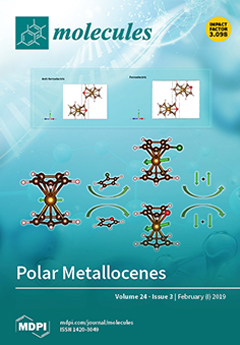Bio-electrochemical systems such as microbial fuel cells and microbial electrosynthesis cells depend on efficient electron transfer between the microorganisms and the electrodes. Understanding the mechanisms and dynamics of the electron transfer is important in order to design more efficient reactors, as well as
[...] Read more.
Bio-electrochemical systems such as microbial fuel cells and microbial electrosynthesis cells depend on efficient electron transfer between the microorganisms and the electrodes. Understanding the mechanisms and dynamics of the electron transfer is important in order to design more efficient reactors, as well as modifying microorganisms for enhanced electricity production.
Geobacter are well known for their ability to form thick biofilms and transfer electrons to the surfaces of electrodes. Currently, there are not many “on-line” systems for monitoring the activity of the biofilm and the electron transfer process without harming the biofilm. Raman microscopy was shown to be capable of providing biochemical information, i.e., the redox state of C-type cytochromes, which is integral to external electron transfer, without harming the biofilm. In the current study, a custom 3D printed flow-through cuvette was used in order to analyze the oxidation state of the C-type cytochromes of suspended cultures of three
Geobacter sulfurreducens strains (PCA, KN400 and ΔpilA). It was found that the oxidation state is a good indicator of the metabolic state of the cells. Furthermore, an anaerobic fluidic system enabling in situ Raman measurements was designed and applied successfully to monitor and characterize
G. sulfurreducens biofilms during electricity generation, for both a wild strain, PCA, and a mutant, ΔS. The cytochrome redox state, monitored by the Raman peak areas, could be modulated by applying different poise voltages to the electrodes. This also correlated with the modulation of current transferred from the cytochromes to the electrode. The Raman peak area changed in a predictable and reversible manner, indicating that the system could be used for analyzing the oxidation state of the proteins responsible for the electron transfer process and the kinetics thereof in-situ.
Full article






